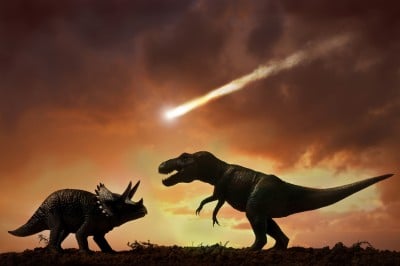Newswise — DALLAS (SMU) – Millions of years before jazz filled New Orleans streets or fishing boats were harvesting shrimp in the Gulf, Louisiana was home to terrifying sea monsters, a tenacious mammal and a seismic cataclysm that reshaped life on Earth.
With fossils and seismic images, a team led by SMU paleontology researchers has chronicled the history of Louisiana in the interval leading up to, during and soon after the dinosaur-killing asteroid hit Earth roughly 66 million years ago.
Fossils found show evidence of a thriving marine ecosystem during the last stages of the Late Cretaceous, abruptly terminated by the Chicxulub asteroid strike. Also presented is the serendipitous recovery of a mammal skull from an oil well core, providing a striking bookend to the extinction event and heralding the early phases of the Age of Mammals. And using seismic images, researchers in Louisiana have discovered massive “ghost-maker megaripples” buried underground — likely the largest ever found — formed by the powerful tsunami triggered by the asteroid impact.
The findings were published in LSU Museum of Natural Science’s “Vertebrate Fossils of Louisiana” in a tribute to the late paleontologist Judith A. Schiebout.
Michael J. Polcyn, research associate in the Huffington Department of Earth Sciences and senior research fellow, ISEM at SMU, led the research team.
Louisiana’s lost sea monsters
About 66 million years ago, Louisiana was submerged under a warm, shallow Gulf. The dominant hunters in this aquatic environment were mosasaurs — massive marine reptiles that could reach lengths of nearly 50 feet. With powerful jaws and serpentine bodies, these “sea lizards” ruled the marine ecosystem, much like orcas today.
While the longest continuous fossil record of mosasaurs in the U.S. come from Texas, Alabama, Mississippi and Tennessee, few have turned up in Louisiana — namely in Bienville Parish, where salt domes have pushed Cretaceous-aged rock to the surface. These rare finds include a mosasaur tooth, likely from the genus Prognathodon, SMU researchers and others found.
“Louisiana is not known for having a great fossil record,” said SMU paleontologist Louis L. Jacobs, who was part of the research team. “But when you put it all together, it has a pretty interesting and valuable fossil record.”
Polcyn added, “The contribution of this work reports the first Cretaceous marine reptile fossils known from Louisiana, putting them in a broader geographic and temporal context in the Gulf region.”
The same genus discovered in Angola by researchers led by Jacobs and Polcyn shows these marine reptiles flourished in the ecosystems across both Louisiana and the newly formed South Atlantic Ocean basin.
Many Angolan fossils were displayed in the Smithsonian Museum’s “Sea Monsters Unearthed: Life in the Angola’s Ancient Seas” exhibit, co-produced with SMU. That exhibit is now being prepared to travel to other cities.
Then came the asteroid
The reign of the mosasaurs – and countless other species – ended abruptly when a 6-mile-wide asteroid struck the Yucatán Peninsula in Mexico, triggering the fifth mass extinction in Earth’s history. The impact of the Chicxulub asteroid unleashed fireballs, tsunamis, and earthquakes worldwide.
In Louisiana, evidence of this chaos remains hidden underground. Seismic imaging recently discovered massive underwater ripples known as “ghost-maker megaripples” that reach 16 meters (over 52 feet) high and are over a half a kilometer apart, formed by the post-impact tsunami.
“The seismic image showing the megaripples on the ancient sea floor is a wonderful illustration of the tremendous amount of energy introduced into the area by the impact tsunami in a very short period of time,” Polcyn said.
The megaripples, found by co-researcher Gary L. Kinsland and his team, are likely the largest ones ever found, researchers said. Kinsland is a coastal land loss and Louisiana geology expert at the University of Louisiana at Lafayette.
Prehistoric mammals emerge
When the dust settled and the Cretaceous Period ended, mammals stepped into the spotlight. From an oil well in Louisiana at about 2,460 feet, a single Paleocene mammal fossil – Anisonchus fortunatus – was recovered.
It may not be a dramatic skeleton or towering beast. But researchers said this tiny fossil of a primitive hoofed animal from 63 to 62 million years ago represents a turning point in Earth’s history: the impressive rise of mammals after the dinosaurs’ downfall.
Polcyn said their findings go beyond promoting Louisiana paleontology, a lifelong goal of Schiebout.
“The story we tell of the end of the Cretaceous Period, the asteroid impact and the resulting reorganization of ecosystems are global in nature and provides a reference for anyone interested in that interval of Earth history,” he said.
SMU is the nationally ranked global research university in the dynamic city of Dallas. SMU’s alumni, faculty and more than 12,000 students in eight degree-granting schools demonstrate an entrepreneurial spirit as they lead change in their professions, communities and the world.
